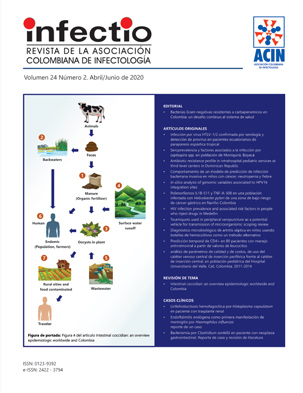In silico analysis of genomic variables associated to HPV16 integration sites
Contenido principal del artículo
Resumen
Background: Despite current prophylactic interventions, a significant proportion of patients suffers a cancer-specific mortality, leading to a global awareness of the
importance of identifying factors associated to the etiology of HPV-associated cancer. According to this, HPV-DNA integration into human genome is an important event in the pathogenesis. Purpose: To identify in silico, molecular regions of the genome where the HPV integration events occur
Methods: We performed a bioinformatic study based on a systematic search in Medline through PubMed, Embase and Lilacs from inception to April 2019. We used the UCSC Genome Browser Home (https://genome.ucsc.edu) to evaluate the genetic environment. Results: HPV integration sites by anatomical location related to cervical cancer were 374 (61%). In addition, 325 (87%) of these integration sites had HPV-16, 21 (5%) had HPV-18 and 28 (7%) had another type of genotype. Oro-pharyngeal cavity was the second anatomic site with 162 (26%) integration sites. It is noteworthy that the HPV-16 was found integrated into 160 (99%) analyzed sites.
Conclusion: Our results suggest that many of the integration sites reported in the scientific literature are HPV 16 from squamous cell carcinomas and 50% of HPV16
were integrated into transcriptional units that might affect the expression of gene target.

